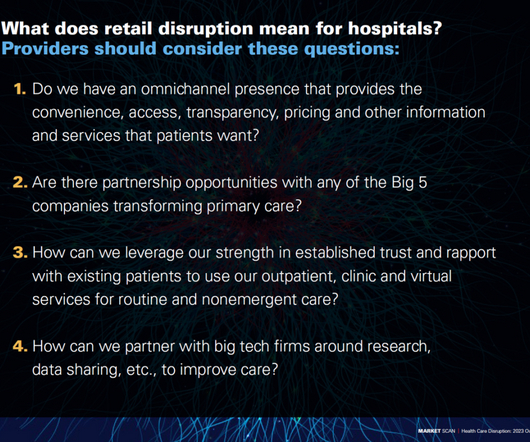The American Hospital Association Looks at Retail and Tech Health Care Disruptors
Health Populi
FEBRUARY 16, 2023
hospital sector is facing major challenges on all fronts: staffing (especially nursing and more broadly, clinician burnout), supply chain, financial stressors, demographics, and cross-industry politics vis-à-vis pharma and health insurance. “By 2030, nontraditional players could own as much as 30% of the primary care market.”












Let's personalize your content